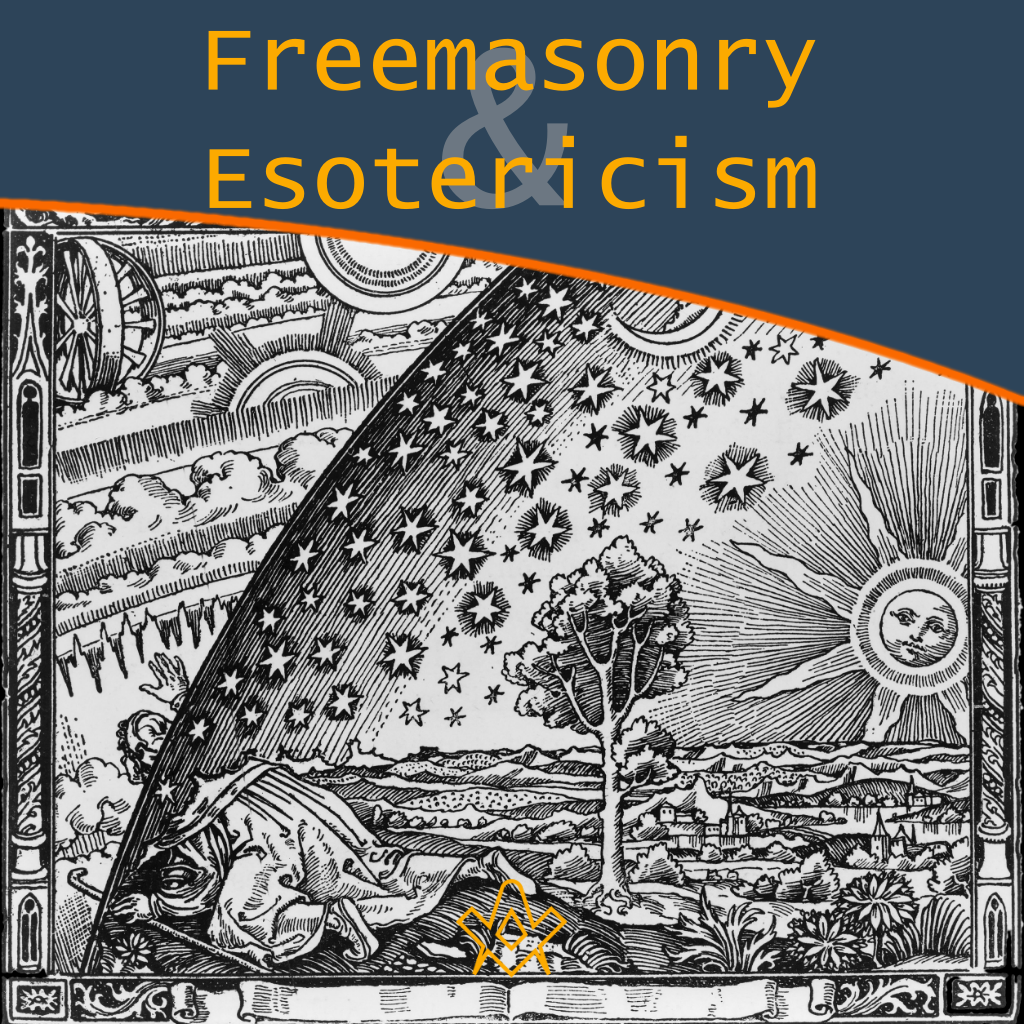Universal Freemasonry, beyond its particular and different rites and rituals, is an esoteric school itself since there can be no Freemasonry without esotericism.
Feature Image: ‘Exotericizing the esoteric, making it visible, is the way of teaching’ by Delia Steinberg
In the absence of esotericism in Freemasonry, it would cease to be an initiatory order to become a simple cultural association.
Throughout the course of the history of Freemasonry, many dear brothers, forgetting their initiation, have lived, and acted according to the moral of Tartuffe – Tartuffe in Masonry – which has given rise to the existence of that black legend that weighs on the Order in the profane world.
Freemasonry, far from being a dark institution as its detractors claim, is a centre of light that teaches the search for truth and gives its initiates the tools for the awakening of consciousness and free thought.
That Freemasonry is an esoteric school means that it tries to get its initiates to study and investigate the forces and/or energies that sustain and move both the macrocosm and the microcosm, which are hidden from the profane senses.

Microcosm – Macrocosm By Johann Theodor de BryFludd, Robert Utriusque cosmi historia Faksimile-Ausgabe der Erstausgabe Oppenheim/Frankfurt, 1617–1621 – Robert Fludd, Utrisque Cosmi, Band II, Oppenheim, 1619., Public Domain,
IMAGE LINKED: wikimedia Attribution 4.0 International (CC BY 4.0)
The wise and futurist Nikola Tesla (1856-1943) said:
‘if you want to understand the Universe think about energy, frequency and vibration.’
Everything when it exists in the cosmos is energy, whose most basic form of expression in the profane world of the five senses is through light and sound.
This is how the profane world perceives its time and space. Light – colours – and Sounds – words –, forms of energy that are known and worked on by Freemasonry.
Albert Einstein (1879-1955) would add the equation E = MC².
For Einstein, the increase in the relativistic mass (M) of a body multiplied by the speed of light squared (C²) is equal to the kinetic energy (E) of that body.
Einstein showed that space and time are actually flexible. Thus, objects with enormous mass distort space and time around them. Space-time is made up of energy that manifests itself in different vibrations, forming ‘layers’ of consciousness that exist according to their vibrational cycles.
For example, the planets are not properly separated from each other by a space, but by a vibratory level that implies a degree of energy.
‘Nothing is immobile; everything moves; everything vibrates.
The principle of vibration explains the differences between the various manifestations of matter, force, mind and even the same energy, which are nothing but the result of the various vibratory states.’
So, esoteric knowledge in Freemasonry makes the understanding of energy (Einstein), frequency and vibration (Tesla) available to the initiate, in terms of self-knowledge: nosce te ipsum [know thyself] since we do not function differently from how the universe works.
‘As it is above, it is below’ and ‘as it is inside, it is outside.’

Symbolic illustration of the tenet ‘As Above, So Below’ .
Viridarium chymicum figuris cupro incisis adornatum, et poeticis picturis illustratum / [Daniel Stolcius]..
IMAGE LINKED: wellcome collection Attribution 4.0 International (CC BY 4.0)
Esotericism is the study and investigation of the nature of both man and the universe, which is none other than knowing the laws of the evolution of energy, which only transforms.
However, frequently the profane world, the learned in particular, speak pejoratively about esotericism, trying to distort or ridicule it and make it synonymous with magical arts and tricks, or qualify it as a proto science.
Believing that esotericism is ‘magical arts’ is ignorance.
To understand by esotericism ‘magical arts’, is to believe like profane and not to think like initiated.
It is looking without actually seeing, much less observing the existence, for example, of the golden ratio or golden section present in nature, whose beauty and harmony remains invisible to profane eyes.
Geometry and mathematics are essentially esoteric, as understood by, for example, the Ionic Greek philosopher Pythagoras of Samos (c. 570 BC – 490 BC), on whose teachings early modern European esotericism was based, who discovered that hidden in the pentagram is the secret to creating the perfect rectangle that can be mathematically reproduced indefinitely.

Fibonacci Spiral
The perfect rectangle, in turn, contains a spiral that repeats the proportions of its lines to infinity, the so-called Fibonacci sequence, discovered by the Italian mathematician Leonardo Bigollo Pisano aka Fibonacci (c. 1170-1240/50).
Then, after the Fibonacci sequence, another number is hidden, a value associated with the most perfect and harmonious proportions known by mathematicians as ‘Phi’, which is named after the Greek sculptor Phidias (c. 480 BC – 431 BC), author of great architectural landmarks such as the Parthenon in Athens.
Many maintain that Phidias would have carefully used the golden ratio in his works.
‘Phi’ is also known as the ‘golden ratio’, ‘golden number’ or ‘divine proportion’; a number that begins with 1.61803…. followed by infinite decimal places.
Its beauty and importance reach such a point that for Plato it meant ‘the best of all mathematical relationships and the key to the physics of the cosmos.’

The School of Athens: a key to the figures in the centre of the composition. Engraving by G. Volpato, after Raphael..
IMAGE LINKED: wellcome collection Attribution 4.0 International (CC BY 4.0)
All philosophy of Pythagorean esoteric society (sixth century BC) was based on the initiatory importance of numbers, since, as the Pythagorean Greek philosopher and mathematician Philolaus (c. 470 BC – c. 380 BC) would say:
‘Everything knowable has a number, for it is not possible that without number nothing can be conceived or known.’
Well, in all the infinite variety of forms of nature there is a mathematical logic. The universe is mathematically perfect.
Initiatory esoteric knowledge is also often understood by the profane world as a proto-science; however, every initiate knows that Albert Einstein’s masterpiece, his ‘General Theory of Relativity’, began as a proto-science.
A true initiate, without false pride, knows and humbly recognizes the value of esoteric science, and that is how it was understood by great minds of humanity, such as:

Hippocrates of Kos (c. 460 BC – c. 370 BC), doctor of Ancient Greece, of the so-called century of Pericles. Referred to as the ‘Father of Medicine’. His ‘Theory of the Four Humors’ stands out.
Engraving: bust of Hippocrates; by Paul. Credit: Wellcome Collection
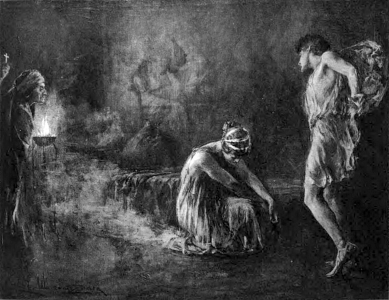
Hypatia of Alexandria (c. 350 – c. 415 AD), native of Egypt, philosopher, mathematician, and astronomer. Considered the first woman scientist in history.
Illustration: from an 1899 edition of Charles Kingsley’s 1853 novel Hypatia. Picture is from Vol. 2, chapter 26, page 212. It shows Philammon encountering Hypatia performing a pagan ritual. Artist: Lee Woodward Zeigler. Public Domain licence.

Paracelsus (c. 1493-1541), son of an alchemist and physician, Theophrastus von Honenheim, was the creator of the first chemical- and mineral-based drugs. Precursor of biochemistry.
Image: Aureolus Theophrastus Bombastus von Hohenheim [Paracelsus]. Line engraving by T. de Bry.. Credit: Wellcome Collection.
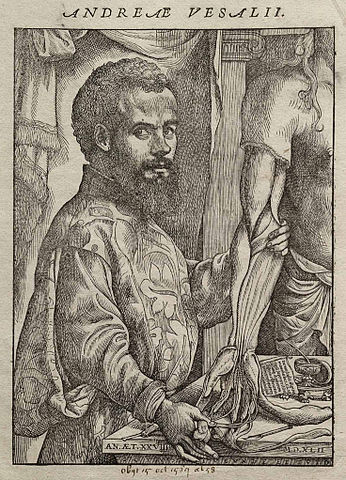
Andrés Vesalio (1514-1564) was born in Brussels into a family of renowned doctors. Founder and father of Modern Anatomy. Famous anatomy treatise De humani corporis fabrica, 1543.
Image: Andrés Vesalio credit: wikimedia

Giordano Bruno (1548-1600), philosopher, astronomer, and mathematician. Born in Nola, Naples. He was burned at the stake by the Holy Inquisition, for denying that the Earth was the centre of the Universe. He rejected geocentric astronomy and went beyond the heliocentric theory of Copernicus.
Image: Opera … ora per la prima volta raccolte e pubblicate da Adolfo Wagner / [Giordano Bruno].. Credit: Wellcome Collection.

Galileo Galilei (1564-1642), born in Pisa, Italy. Philosopher, astronomer, and mathematician. He postulated that the book of nature was written in the language of mathematics. He was the pioneer of the experimental scientific method and the first to use a refracting telescope.
Image: Galileo Galilei. Line engraving by T. Piroli.. Credit: Wellcome Collection

Isaac Newton (1642-1726/27), born in Woolsthorpe, Lincolnshire, England. Physicist and mathematician. In optics, he laid the foundations of modern physical optics. In mechanics, his laws resulted in the formulation of the law of universal gravitation. In mathematics, he was the original discoverer of the infinitesimal calculus. His 1867 masterpiece Philosophiae Naturalis Principia Mathematica stands out.
Image: Sir Isaac Newton. Line engraving by W. Sharp after Sir G. Kneller, 1702.. Credit: Wellcome Collection
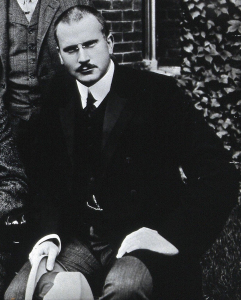
Carl Gustav Jung (1875-1961) was a Swiss psychiatrist and psychoanalyst who founded analytical psychology. Jung concluded that there is a direct relationship between alchemical symbols and the psychoanalytic process, as noted in his 1944 work Psychology and Alchemy. The alchemical process was for Jung the transformation of the impure soul (lead) into a perfected soul (gold), and a metaphor for the individualization process.
Image: Carl Jung (cropped) from Photograph, 1909.. Credit: Wellcome Collection
Through their works and discoveries, great minds of humanity have shown that esotericism is not dogma, that is, esotericism is not a set of beliefs or propositions of an indisputable and obligatory nature for the initiates.
Dogma is found in exotericism, in the ‘exterior’, in the external forms that are considered true and as undeniable principles in the profane world.
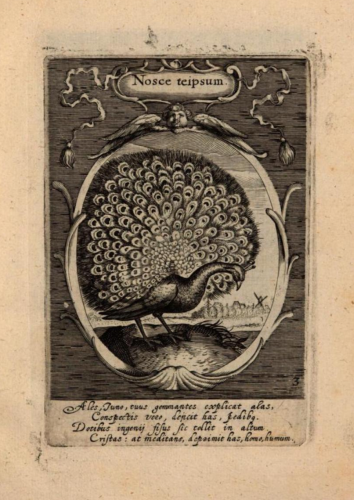
a journey to nosce te ipsum
IMAGE LINKED: wikimedia Attribution 4.0 International (CC BY 4.0)
Esoteric knowledge, from the Greek ‘esôtirokos’, which means ‘going inward’; it is a journey to nosce te ipsum that is free of all dogma that may limit or condition the human mind.
Esotericism is the Uroboros, the unity of all material and spiritual things that never disappear but change their appearance in a perpetual cycle of destruction and creation. Esoteric science devours itself and is reborn of itself.
One of the axioms of the Kybalion states:
everything ebbs and flows;
everything has its periods of advance and retreat;
everything rises and falls;
everything moves like a pendulum;
the measure of its movement to the right is the same as that of its movement to the left;
the rhythm is the compensation
Masonic esotericism teaches to understand, to the extent that the mind of each initiate allows, the principles that govern the cosmos, as was made clear by the Grand Master of the Grand Lodge of Chile I∴ P∴ H ∴ Juan José Oyarzún (mandate 2006-2010), who went on to decorate the Eternal East in 2014, who said:
‘on the sides – of the temple – there are columns with the symbols of the zodiac, that is a representation of the universality of Freemasonry, because each man is born under a particular sign, each man is marked and has a special characteristic according to the sign in which he was born’.

IMAGE LINKED: wikimedia Attribution 4.0 International (CC BY 4.0)
To understand the Uroboros, among others and so many principles and forms of energy that sustain the cosmos, is to know oneself, esotericism is a way of knowing and knowing the Universe, perhaps the most beautiful, harmonious, and perfect that it can exist.
The human being can come to know himself because he is endowed with a mind that allows him to be aware of himself.
The mind as an abstract entity – energy in its pure state – uses the organ called the brain so that it, through the senses and motor functions of the human body, materializes its creations, which are translated into its ideofactures and its manufactures.
The mystery of the mind, like one of its phenomena ‘consciousness’, are perfectly translated in the words of the Australian philosopher David Chalmers (1966-), who pointed out:
‘There is nothing that we know more directly (…), but at the same time it is the most mysterious phenomenon in the universe. ‘
Being aware of yourself implies realizing who I am, how I am, and my surroundings.
In other words, it is the knowledge that one has of its own existence and its ability to act on the environment.
The philosopher René Descartes (1596-1650) in his metaphysical analysis would say: ‘Cogito ergo sum’.
I think, and therefore I know that I think, and therefore I am certain that I think.
This certainty confirms that we exist, at least as thinking beings, since doubting for the philosopher is already a form of thoughts, and if we think, we are.
So, Masonic esotericism seeks that its initiates discover the supreme Art of thinking, but the thinker is not the man who knows much, but one who humbly acknowledges his ignorance, as the phrase that reads from the Apology of Socrates is deduced: ‘I only know that I know nothing’; for Socrates wisdom comes precisely from the recognition of ignorance.

The teacher Oswald Wirth (1860-1943) specified with remarkable wisdom: ‘To think is to reign’; ‘To think is to rise above the mass of beings who think nothing.
Not thinking is consenting to be dominated, led, directed, and commonly treated like a beast of burden.
It is by his intellectual faculties that man is distinguished from the brute. Thought makes him free and gives him the rule of the world.’
Image: Oswald Wirth By Unknown author – http://www.la-rose-bleue.org, CC BY-SA 3.0, wikimedia
Every initiate in the esoteric mysteries of Freemasonry must aspire to become a thinker, a free thinker, whose esoteric stamp he must leave engraved on his plates as proof that his gradual transformation from profane has begun.
Esotericism seeks to know the cause, and above all the Cause of causes, unlike profane knowledge that studies the effects, it does not think.
Hence the remarkable difference between those who seek and love wisdom and accumulators of information: the learned.
Whoever dedicates himself to the study of causes or the Cause of causes, works in the Opus Magnum of the Philosopher’s Stone, which is nothing other than the cubic stone of the Freemasons: ‘Visita Interiora Terrae Rectifying Invenies Occultum Lapidem’ – V.I.T.R.I.O.L. ‘
Visit the interior parts of the earth; by rectification you will find the hidden stone’.
We are a microcosm that has been born from the dust of the stars of the macrocosm.

The Squared Circle By Frater5
IMAGE LINKED: wikimedia Attribution 4.0 International (CC BY 4.0)
Secular science has confirmed that 97% of the human body is made up of ‘stardust’, according to data provided by the Sloan Digital Sky Survey exploration program, published by SDSS Sten Hasselquist, New Mexico State University.

Thinkers such as Aleister Crowley (1875-1947) and Carl Sagan (1934-1996), respectively, pointed out that ‘every man and every woman is a star’ (Crowley); ‘The cosmos is also within us. We are made of the same substance as the stars’ (Sagan).
Image: Aleister Crowley as Magus, Liber ABA credit wikimedia
The symbolism present in the four elements of nature – air, earth, water, and fire – holds deep truths contained in the mineral, vegetable and animal kingdoms, and their relationship with the degrees of the Freemasonic Order.
Hence the famous axiom of esotericism: Knowing-Willing-Dare-Silence.
One of the keys that esotericism gives us to, through personal experience, know and understand both the microcosm and the macrocosm, are the so-called seven hermetic principles. These are:
Mind: ‘everything is mind’, ‘everything is energy’. ‘The universe is mental.’
Correspondence: ‘as above, so below, as below, so above.’
Vibration: ‘nothing is immobile; everything vibrates ‘.
Polarity: ‘everything is double, everything has its pair of opposites, the extremes touch.’
Rhythm: ‘everything exists in an ebb and flow, an action and a reaction, an advance and a retreat’.
Cause and effect: ‘nothing happens by chance; everything happens according to a law ‘.
Generation: ‘the generation manifests itself in everything; everything has a masculine and a feminine ‘.
The study and observation of these seven fundamental principles makes it possible to consciously seek answers to questions such as:
Where do we come from?
Who are we?
and where do we go?

The Q ∴ H ∴ and philosopher René Guénon (1886-1951), in his work ‘The crisis of the modern world’, postulates a critique of modern sciences that by focusing on the ‘effects’ forget in the study of the ‘cause’, being a doctor of exotericism and ignoring the esoteric study of phenomena.
Photo: French philisopher Réne Guénon in 1925 Credit: wikimedia
The Q ∴ H ∴ Guénon, in chapter IV of his work, points out:
‘That is why profane science, that of the moderns, can be considered, justly, as we have already said elsewhere, as ignorant knowledge:
knowing of a lower order, who remains whole at the level of the lowest reality, and knowing ignorant of everything that surpasses him, ignorant of every higher end in himself, as well as of every principle that could assure him a legitimate place, however humble.
That is, between the diverse orders of the integral knowledge; irretrievably enclosed in the relative and limited domain where it has wanted to proclaim itself independent and having thus closed all communication with the transcendent truth and with the supreme knowledge, it is nothing more than a vain and illusory science, which, to tell the truth, does not come you’re welcome and it doesn’t lead to anything’.
Masonic esotericism teaches its initiates through its symbolism, the art of reading the universal principles of the microcosm and the macrocosm, which are found in the signs and symbols that decorate the Masonic temple, and in the beauty and harmony of its celestial vault. , in principle known by reason – limited organ of knowledge – but later, as the rough stone is polished, be assimilated by the intellect – intuition – that is, by the conscious mind of the free thinker who, despite from its limited time of existence, it can reach the universal.
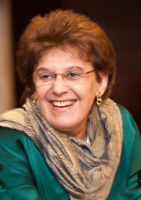
In short and following the ideas of the philosopher Delia Steinberg Guzmán (1943), all philosophy is esoteric, since it constitutes a Love of Wisdom that we do not yet possess, because of what is still hidden from our vision.
And that is the esoteric: the hidden, the hidden, not because of anyone’s premeditated evil, but because of our own ignorance.
Then, in the face of ignorance inherent to human nature, this desire to know, to seek wisdom, is born and, which in the case of Freemasonry, translates into an esoteric initiation destined to awaken consciousness and free thought in its initiates.
Photo: Delia Steinberg Guzmán Credit: Wikimedia
Article by: Carlos Francisco Ortiz
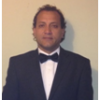
Carlos was initiated in 2015 in Equality Lodge No. 88. Joined Fraternal Action Lodge No. 42 in 2018. (under the regular Grand Lodge of Chile)
During his university life, and before receiving Masonic light, he participated in the reorganization and foundation of Clans of the Youth Fraternity. Alpha Pi Epsilon.

Psychology and Alchemy
By: Carl Jung
Alchemy is central to Jung’s hypothesis of the collective unconscious.
In this volume he begins with an outline of the process and aims of psychotherapy, and then moves on to work out the analogies between alchemy, Christian dogma and symbolism and his own understanding of the analytic process.
Introducing the basic concepts of alchemy, Jung reminds us of the dual nature of alchemy, comprising both the chemical process and a parallel mystical component.
He also discusses the seemingly deliberate mystification of the alchemists.
Finally, in using the alchemical process as providing insights into individuation, Jung emphasises the importance of alchemy in relating to us the transcendent nature of the psyche.

The Kybalion: A Study of the Hermetic Philosophy of Ancient Egypt and Greece
By: Three Initiates (Author)
The most popular occult work of the twentieth century–now in a hardbound edition that evokes the original volume, with a new introduction by scholar of mysticism Richard Smoley.
For generations, readers have debated the origins and studied the knowledge of this mysterious exploration of Hermetic wisdom, attributed to “Three Initiates.”
Now in its second century, The Kybalion is restored to hardcover in a commemorative volume that evokes the appearance of the occult landmark’s first edition.
The new introduction by Richard Smoley, a celebrated scholar of mystical traditions, makes this a historical keepsake.
Recent Articles: by Carlos Francisco Ortiz
 Universal Freemasonry, beyond its particular and different rites and rituals, is an esoteric school itself since there can be no Freemasonry without esotericism. |
 The difference between equity and equality? Equality means providing everyone with the same amount of resources regardless of their needs. Equity is when resources are shared based on each person needs. |
 Discover how the Grand Lodge of China escaped the power of communism. |
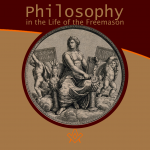 Philosophy in the Life of the Freemason Before the dark night of dogmatic thought, philosophy is the dawn of man, and the light for the Mason in his search for truth. |
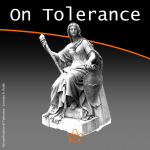 Tolerance is understood as respect for the ideas, beliefs, and practices of others when they are different or contrary to one's own. |
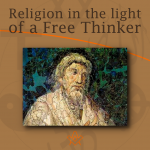 Religion in the light of a Free Thinker Every Mason is a sincere seeker of light, of all light that allows him to advance in his search for truth. |
 Life is shadow, death is light. We live in darkness and we die in the light - read on to learn more about 'a Mason's thought about death'. |
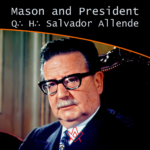 A Mason betrayed - the tragic story of President Salvador Allende. |
 The Mason and his Consciousness of Time Nobody can buy life, life is spent and the expense of life is time. As time goes by, life is spent. |
 Human life is itself trial and error, however, there are errors and horrors, and that is the remarkable difference between the actions of the profane and the actions of the Mason. |
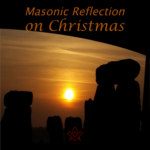 Masonic Reflection on Christmas What is the connection between Freemasonry, Christmas and pagan festivals? |
 Dear Brother - Q∴H∴ Jaime Galté Carré |
 Development of the Emulation Ritual Relevant historical background in the evolutionary development of the Emulation Ritual |
 What is Retejador? And why is it so important? |
 The Dream After the Initiation The dream, in a profane sense, is understood as a biological state or condition, as that which is an integral part of daily life |
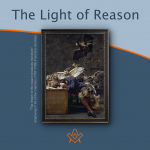 How does man think to himself and think of the universe |
masonic knowledge
to be a better citizen of the world
share the square with two brothers

click image to open email app on mobile device


